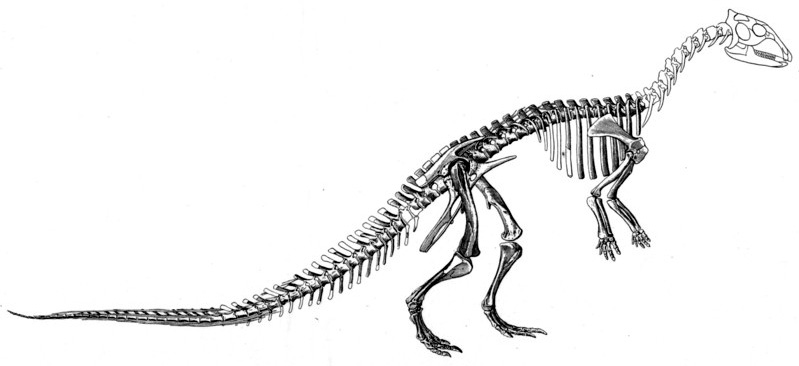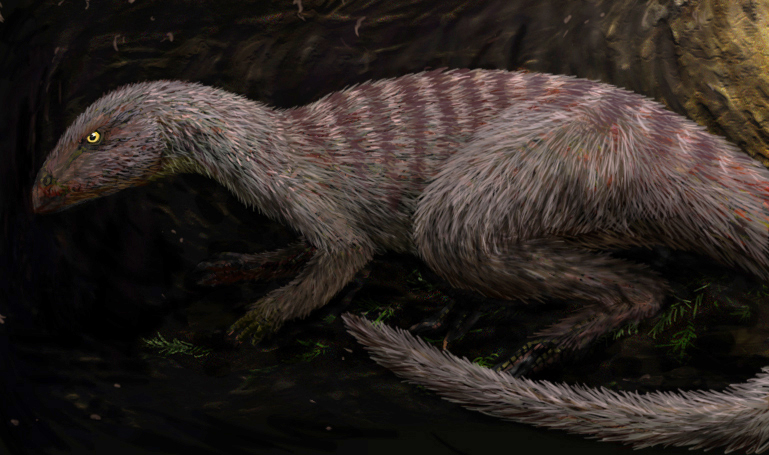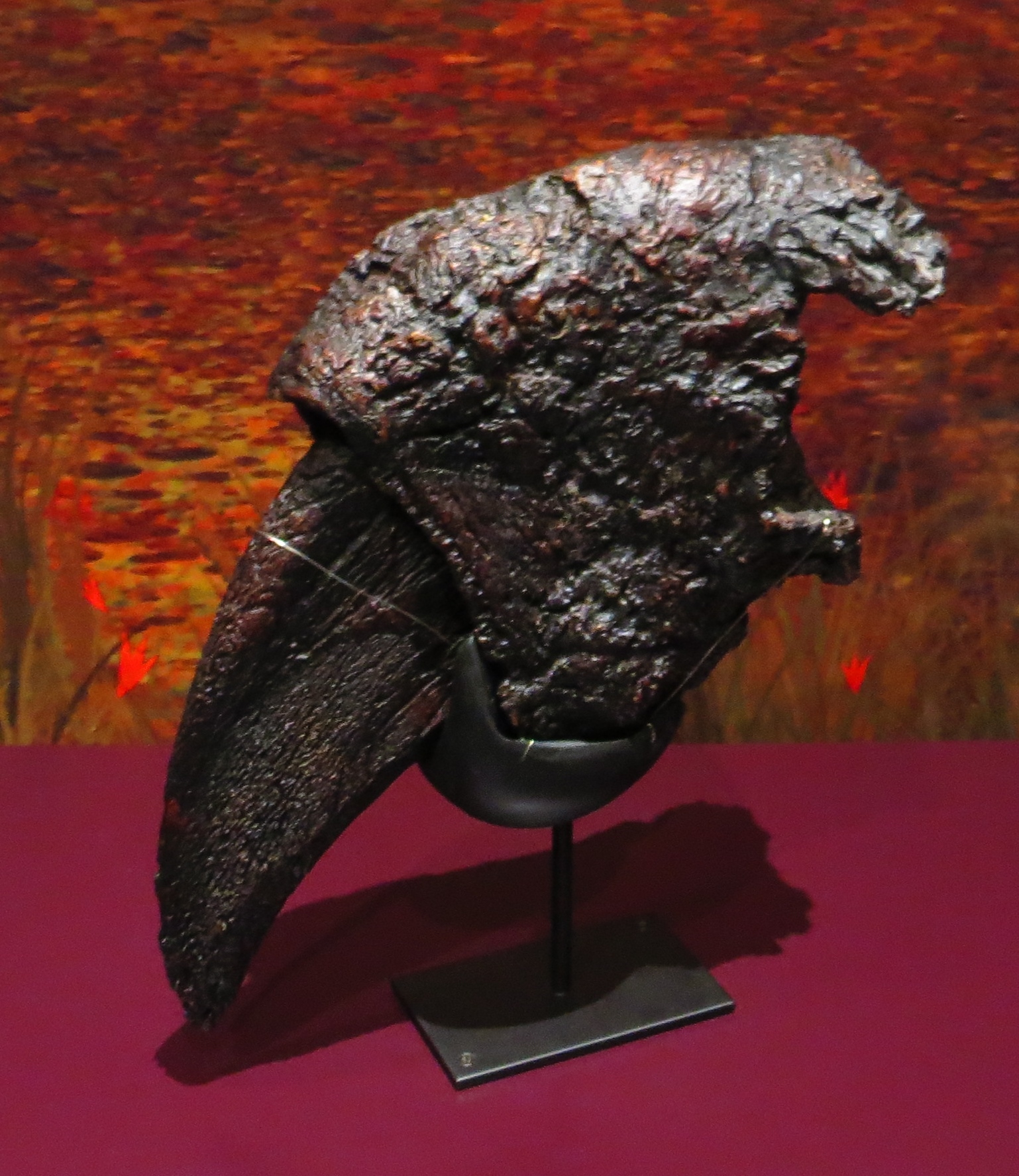|
Albertadromeus
''Albertadromeus'' is an extinct genus of orodromine thescelosaurid dinosaur known from the upper part of the Late Cretaceous Oldman Formation (middle Campanian stage) of Alberta, Canada. It contains a single species, ''Albertadromeus syntarsus''. Etymology The composite term ''Albertadromeus'' is derived from the name of the Canadian province "Alberta", and the Greek word ''dromeus'' (δρομεύς) meaning "runner", a reference to its inferred cursorial nature; thus "runner from Alberta". The specific name, ''syntarsus'' is derived from Greek words "syn" (συν) meaning "together" and "tarsus" (ταρσός) meaning "ankle", hence "together-ankle" a reference to the condition where its distal fibula is fused to its distal tibia. This dinosaur was described and named by Caleb Marshall Brown, David C. Evans, Michael J. Ryan & Anthony P. Russell in 2013 and the type species is ''Albertadromeus syntarsus''. Description The holotype specimen of ''Albertadromeus'' TMP 2009.037.00 ... [...More Info...] [...Related Items...] OR: [Wikipedia] [Google] [Baidu] |
Oldman Formation
The Oldman Formation is a stratigraphic unit of Late Cretaceous (Campanian stage) age that underlies much of southern Alberta, Canada. It consists primarily of sandstones that were deposited in fluvial channel and floodplain environments. It was named for exposures along the Oldman River between its confluence with the St. Mary River and the city of Lethbridge, and it is known primarily for its dinosaur remains and other fossils.Eberth, D.A. and Hamblin A.P. 1993. Tectonic, stratigraphic, and sedimentologic significance of a regional discontinuity in the upper Judith River Group (Belly River wedge) of southern Alberta, Saskatchewan, and northern Montana. Canadian Journal of Earth Sciences 30: 174-200. Lithology The Oldman Formation is composed primarily of light-colored, fine-grained sandstones. They are upward-fining, lenticular to sheet-like bodies that are yellowish, steep-faced and blocky in outcrop. The formation also includes lesser amounts of siltstone and mudstone. ... [...More Info...] [...Related Items...] OR: [Wikipedia] [Google] [Baidu] |
Orodromine
Thescelosauridae is a clade of neornithischians from the Cretaceous of East Asia and North America. The group was originally used as a name by Charles M. Sternberg in 1937, but was not formally defined until 2013, where it was used by Brown and colleagues as the group uniting ''Thescelosaurus'' and '' Orodromeus'', based on their phylogenetic results. During a phylogenetic revision of neornithischians by Clint Boyd in 2015, the authorship of Thescelosauridae was given to Brown and colleagues, which meant that the similar name Parksosauridae, informally defined in 2002 by Buchholz, would have had priority over Thescelosauridae. The two clades had slightly different definitions, with Parksosauridae referring to all animals closer to ''Parksosaurus'' than ''Hypsilophodon'', but they contained the same taxa so Boyd used Parksosauridae under the assumption it had priority. However, in formalizing the clade following the regulations of the PhyloCode, Madzia, Boyd, and colleagues identif ... [...More Info...] [...Related Items...] OR: [Wikipedia] [Google] [Baidu] |
Thescelosaurus
''Thescelosaurus'' ( ) is a genus of Ornithischia, ornithischian dinosaur that lived during the Late Cretaceous period (geology), period in western North America. It was named and described in 1913 by the Paleontology, paleontologist Charles W. Gilmore; the type species is ''T. neglectus''. Two other species, ''T. garbanii'' and ''T. assiniboiensis'', were named in 1976 and 2011, respectively. Additional species have been suggested but are currently not accepted. ''Thescelosaurus'' is the eponymous member of its family, the Thescelosauridae. Thescelosaurids are either considered to be basal (phylogenetics), basal ("primitive") ornithopods, or are placed outside of this group within the broader group Neornithischia. Adult ''Thescelosaurus'' would have measured roughly long and probably weighed . It biped, moved on two legs, and its body was counter-balanced by its long tail, which made up half of the body length and was stiffened by rod-like ossified tendons. The animal had a long ... [...More Info...] [...Related Items...] OR: [Wikipedia] [Google] [Baidu] |
Zephyrosaurus
''Zephyrosaurus'' (meaning "westward wind lizard") is a genus of orodromine ornithischian dinosaur. It is based on a partial skull and postcranial fragments discovered in the Aptian-Albian-age Lower Cretaceous Cloverly Formation of Carbon County, Montana, USA. New remains are under description, and tracks from Maryland and Virginia, also in the US, have been attributed to animals similar to ''Zephyrosaurus''. It lived approximately 113 mya. Discovery and history Hans-Dieter Sues named his new genus in recognition of the fossil being found in western North America, and Charles R. Schaff, who found the specimen. MCZ 4392, the type specimen, is composed of jaw fragments, the braincase and associated bones, several partial vertebrae, and rib fragments. He found the new genus to represent a previously unknown lineage of hypsilophodont (a taxon now considered not natural), similar in some respects to ''Hypsilophodon''. Because of the fragmentary nature of the type, and lack of ... [...More Info...] [...Related Items...] OR: [Wikipedia] [Google] [Baidu] |
Oryctodromeus
''Oryctodromeus'' (meaning "digging runner") was a genus of small orodromine thescelosaurid dinosaur. Fossils are known from the Late Cretaceous Blackleaf Formation of southwestern Montana and the Wayan Formation of southeastern Idaho, USA, both of the Cenomanian stage, roughly 105-96 million years ago. A member of the small, presumably fast-running herbivorous family Thescelosauridae, ''Oryctodromeus'' is the first non-avian dinosaur published that shows evidence of burrowing behavior. Description ''Oryctodromeus'' was originally described as lacking ossified tendons in the tail. However, specimens from the Wayan Formation demonstrate the presence of a thick tendon lattice in the dorsal, sacral, and caudal columns of some specimens; perhaps indicating more flexibility in ossified tendons than has previously been supposed. Adaptations in the jaws, forelimbs, and pelvis were described in the Blackleaf specimens that could have helped move and manipulate soil. Additional mate ... [...More Info...] [...Related Items...] OR: [Wikipedia] [Google] [Baidu] |
Cladogram
A cladogram (from Greek language, Greek ''clados'' "branch" and ''gramma'' "character") is a diagram used in cladistics to show relations among organisms. A cladogram is not, however, an Phylogenetic tree, evolutionary tree because it does not show how ancestors are related to descendants, nor does it show how much they have changed, so many differing evolutionary trees can be consistent with the same cladogram. A cladogram uses lines that branch off in different directions ending at a clade, a group of organisms with a last common ancestor. There are many shapes of cladograms but they all have lines that branch off from other lines. The lines can be traced back to where they branch off. These branching off points represent a hypothetical ancestor (not an actual entity) which can be inferred to exhibit the traits shared among the terminal taxa above it. This hypothetical ancestor might then provide clues about the order of evolution of various features, adaptation, and other e ... [...More Info...] [...Related Items...] OR: [Wikipedia] [Google] [Baidu] |
Occipital Condyle
The occipital condyles are undersurface protuberances of the occipital bone in vertebrates, which function in articulation with the superior facets of the Atlas (anatomy), atlas vertebra. The condyles are oval or reniform (kidney-shaped) in shape, and their anterior extremities, directed forward and medialward, are closer together than their posterior, and encroach on the basilar portion of the bone; the posterior extremities extend back to the level of the middle of the foramen magnum. The articular surfaces of the condyles are convex from before backward and from side to side, and look downward and lateralward. To their margins are attached the capsules of the atlanto-occipital joints, and on the medial side of each is a rough impression or tubercle for the alar ligament. At the base of either condyle the bone is tunnelled by a short canal, the hypoglossal canal. Clinical significance Fracture of an occipital condyle may occur in isolation, or as part of a more extended basi ... [...More Info...] [...Related Items...] OR: [Wikipedia] [Google] [Baidu] |
Ungual
An ungual (from Latin ''unguis'', i.e. ''nail'') is a highly modified distal toe bone which ends in a hoof, claw, or nail. Elephants and ungulates have ungual phalanges, as did the sauropod Sauropoda (), whose members are known as sauropods (; from '' sauro-'' + '' -pod'', 'lizard-footed'), is a clade of saurischian ('lizard-hipped') dinosaurs. Sauropods had very long necks, long tails, small heads (relative to the rest of their b ...s and horned dinosaurs. A claw is a highly modified ungual phalanx. As an adjective, ungual means ''related to nail'', as in ''periungual'' (around the nail). References External links Mammal anatomy {{animal-anatomy-stub ... [...More Info...] [...Related Items...] OR: [Wikipedia] [Google] [Baidu] |
Foramen
In anatomy and osteology, a foramen (; : foramina, or foramens ; ) is an opening or enclosed gap within the dense connective tissue (bones and deep fasciae) of extant and extinct amniote animals, typically to allow passage of nerves, artery, arteries, veins or other soft tissue structures (e.g. muscle tendon) from one body compartment to another. Skull The skulls of vertebrates have foramina through which nerves, arteries, veins, and other structures pass. The human skull has many foramina, collectively referred to as the cranial foramina. Spine Within the vertebral column (spine) of vertebrates, including the Human vertebral column, human spine, each bone has an opening at both its top and bottom to allow nerves, arteries, veins, etc. to pass through. Other * Apical foramen, the hole at the tip of the root of a tooth * Foramen ovale (heart), a hole between the venous and arterial sides of the fetal heart * Vertebra#Cervical vertebrae, Transverse foramen, one of a pair ... [...More Info...] [...Related Items...] OR: [Wikipedia] [Google] [Baidu] |
Cnemial Crest
The cnemial crest is a crestlike prominence located at the front side of the head of the tibiotarsus or tibia in the legs of many mammals and reptiles (including birds and other dinosaurs). The main extensor muscle of the thigh In anatomy, the thigh is the area between the hip (pelvis) and the knee. Anatomically, it is part of the lower limb. The single bone in the thigh is called the femur. This bone is very thick and strong (due to the high proportion of bone tissu ... is attached to this ridge. References Bird anatomy {{ornithology-stub ... [...More Info...] [...Related Items...] OR: [Wikipedia] [Google] [Baidu] |





